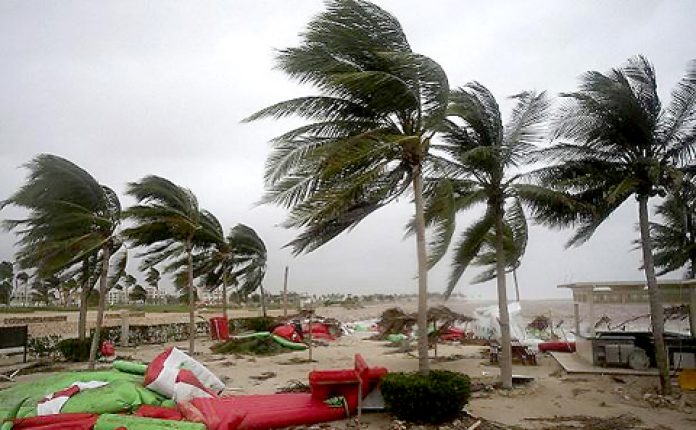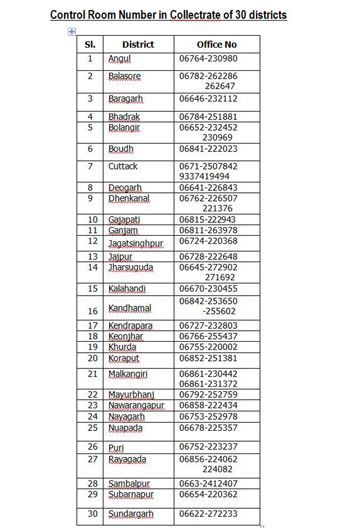
More than a million people have been shifted to safer areas as extremely severe cyclone Fani hit the Odisha coast in Puri early morning today with a wind speed of around 175 kmph. Rail, road and air traffic has been completely distrupted as medical and disaster management teams are kept on stand by. Heavy rains and strong winds battered the coastal areas as the cyclone made landfall in the Puri district of Odisha at around 9 am on Friday.
The Met department has issued a ‘yellow warning’ for Odisha, predicting heavy to very heavy rain in several areas. Odisha’s 4, 879 multipurpose cyclone shelters are ready. The shelters can accommodate about one million people during cyclones and floods. Schools and universities have been closed in advance of the approaching storm. Tamil Nadu and Andhra Pradesh have been placed on high alert too.
The worst one, a super cyclone had hit the state in 1999, killing more than 15000 people , with most of the casualty being reported from Odisha.
HIGHLIGHTS
Flights canceled in Odisha and Kolkata
All flights to and from Bhubaneswar airport in the eastern state of Odisha were canceled from midnight on Thursday. Kolkata airport will cancel flights from 9:30 p.m. local time Friday, according to India’s Ministry of Civil Aviation. More than 200 trains have been cancelled. Operations at Paradip, Gopalpur and Dhamra ports have been closed since Thursday.
About 10,000 villages and 52 towns in nine districts in the eastern state of Odisha are in the direct line of Tropical Cyclone Fani.
The wind speed of the Extremely Severe Cyclone Fani could reach 200-230 kilometres after the landfall. The cyclone is expected to remain extremely severe for four to six hours after landfall.
The meteorological department has warned of ‘total destruction’ of thatched huts and kutcha houses, major damage to roads and crops, the uprooting of power poles and potential danger from flying objects.
All educational institutions, commercial establishments, shops and offices will remain closed on Friday morning while the movement of vehicles has been restricted.
The government has set up 4,852 cyclone and flood shelters, where evacuees have been provided with cooked food.
As many as 604 women, who are at advanced stages of pregnancy, have been shifted to maternal care centres. The health department has formed 302 rapid response teams
Twenty-eight units of NDRF, twenty units of Odisha Disaster Rapid Action Force and 525 fire personnel have been kept ready for the rescue operation.
Three Navy ships — Sahyadri, Ranvir and Kadmatt — have been kept ready with relief material and medical teams.
Aircraft and helicopters have been kept on standby for immediate deployment to carry out an aerial survey, aid in the rescue operation and for air-dropping relief material as and when required.
Over 300 boats have also been kept ready to be engaged in the rescue and relief work to deal with the flood situation which could follow the cyclone.
India has classified Fani as an ‘extremely severe cyclonic storm’ and deployed ships and helicopters for relief and rescue operations. Army and air force units have also been put on standby in Odisha, West Bengal and Andhra Pradesh states.
Fani – Category 3 or 4 hurricane
Cyclone Fani may be a category 3 or 4 hurricane. When it comes to hurricanes, meteorologists rely on the Saffir-Simpson Hurricane Wind Scale to measure the magnitude of the hurricane’s impact..
Category 3: Winds ranging from 111 to 130 mph cause significant damage to property, humans, and animals. Mobile and poorly constructed frame homes are often destroyed, and even well-built frame homes commonly sustain major damage. Significant damage to apartments and shopping centers (even those made of wood or steel) can be expected. Category 3 storms can also cause extensive inland flooding. Electricity and water are commonly unavailable for several days to several weeks after the storm, therefore it’s important for residents to have their own stores of canned food and water.
Category 4: Winds range from 131 to 155 mph. Category 4 hurricanes often include long-term power outages and water shortages lasting from a few weeks to a few months, so again, it’s important for any remaining residents to have a significant nonperishable food and water supply at hand.
Odisha’s emergency helpline number for Cyclone Fani +916742534177.
Control room number of different districts.






























































